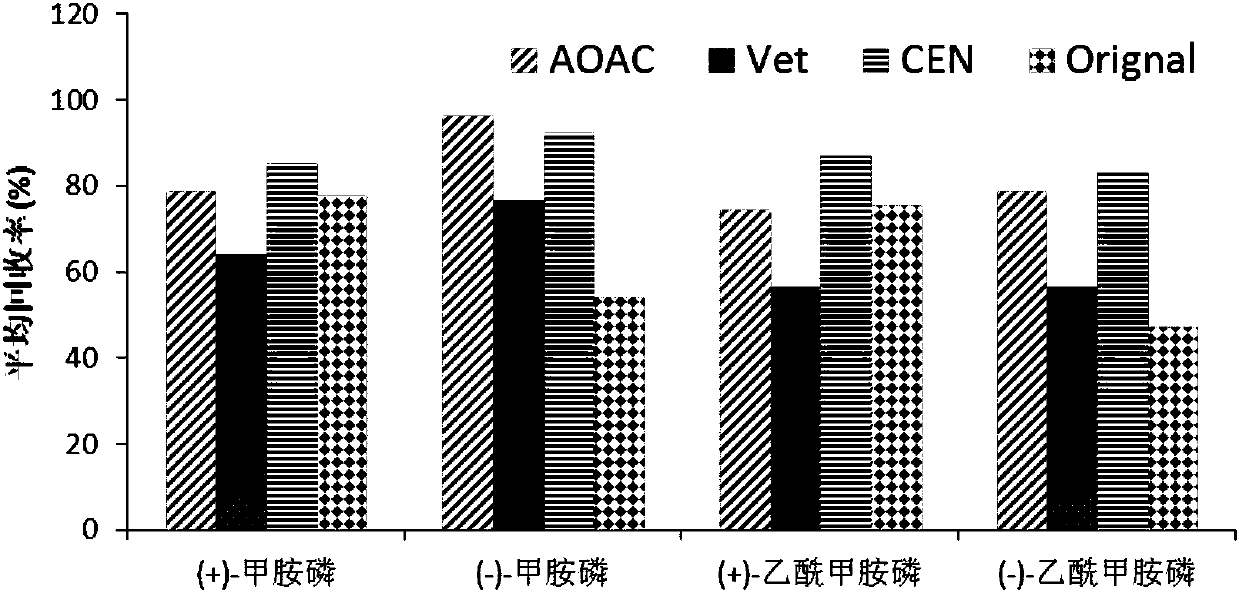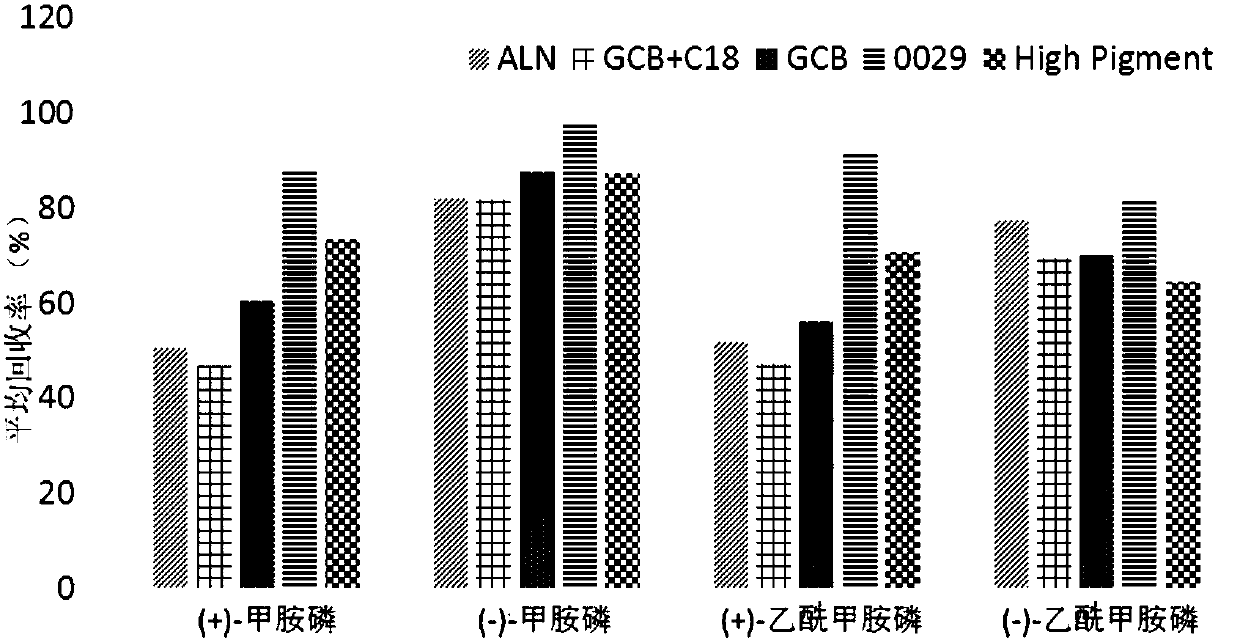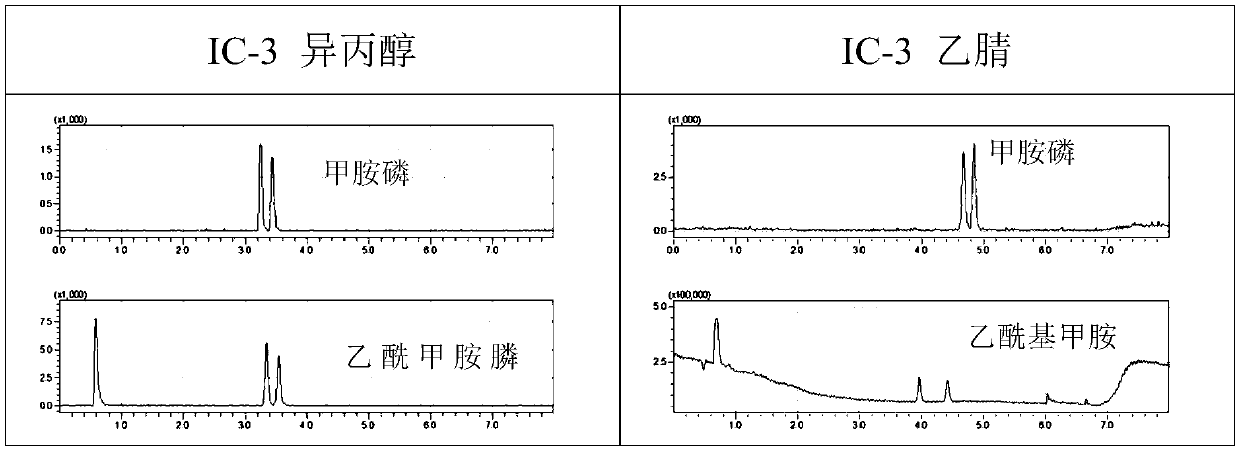Method for determining residual quantity of pesticide enantiomers in tea leaves
A technology of pesticide residues and enantiomers, which is applied in the direction of measuring devices, instruments, scientific instruments, etc., can solve the problems of poor separation of enantiomers and long time consumption, so as to avoid the use of a large number of toxic reagents and time-consuming Short, good separation effect
- Summary
- Abstract
- Description
- Claims
- Application Information
AI Technical Summary
Problems solved by technology
Method used
Image
Examples
no. 1 approach
[0053] The first embodiment of the present invention provides a method for detecting the content of methamidophos and / or its derivative enantiomer from tea leaves containing pesticide residues. The method comprises the steps of:
[0054] Step 1: a step of providing tea raw materials containing residual methamidophos and / or derivatives thereof;
[0055] Step 2: extracting methamidophos and / or derivatives thereof remaining in the tea raw material described in step 1 and removing impurities other than methamidophos and / or derivatives thereof;
[0056] Step 3: performing chromatographic separation on the extract of methamidophos and / or its derivatives obtained in step 2 from which impurities have been removed, so that the enantiomers of methamidophos and / or its derivatives are separated;
[0057] Step 4: Perform mass spectrometry detection on the separated enantiomers obtained in step 3, so as to determine the content of each enantiomer.
[0058] Wherein, in step 3, the chromato...
no. 2 approach
[0102] A second embodiment of the present invention provides a method for separating the enantiomers of methamidophos and / or acephate. Described separation method comprises the steps:
[0103] A solution containing methamidophos and / or acephate enantiomers is separated using a chromatographic column,
[0104] The chromatographic column is a chiral chromatographic column, and the chiral chromatographic column includes a chiral stationary phase and a mobile phase,
[0105] The chiral stationary phase includes a matrix and cellulose or derivatives thereof modified by chiral substances on the surface of the matrix, and the chiral substances include phenylcarbamate or benzoic acid or derivatives thereof,
[0106] Described mobile phase comprises supercritical fluid (supercritical carbon dioxide) and modifier, and described modifier is selected from C 1 -C 4 Alcohol or nitrile compounds, preferably methanol, ethanol, isopropanol or acetonitrile,
[0107] The resolution of the me...
no. 3 approach
[0111] In the third embodiment of the present invention, a method for detecting the content of methamidophos and / or acetylmethamidophos enantiomers in pesticide residues is provided. The detection method includes the method for separating the enantiomers of methamidophos and / or acephate according to the second embodiment above.
PUM
| Property | Measurement | Unit |
|---|---|---|
| Resistivity | aaaaa | aaaaa |
| Aperture | aaaaa | aaaaa |
| The inside diameter of | aaaaa | aaaaa |
Abstract
Description
Claims
Application Information
 Login to View More
Login to View More - R&D
- Intellectual Property
- Life Sciences
- Materials
- Tech Scout
- Unparalleled Data Quality
- Higher Quality Content
- 60% Fewer Hallucinations
Browse by: Latest US Patents, China's latest patents, Technical Efficacy Thesaurus, Application Domain, Technology Topic, Popular Technical Reports.
© 2025 PatSnap. All rights reserved.Legal|Privacy policy|Modern Slavery Act Transparency Statement|Sitemap|About US| Contact US: help@patsnap.com



